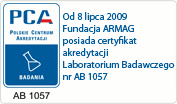
Pollutants
Sulphur dioxide is an acidic gas which combines
with water vapour in the atmosphere to produce acid rain. Both wet
and dry deposition have been implicated in the damage and
destruction of vegetation and in the degradation of soils, building
materials and watercourses. SO2 in ambient air can also affect
human health, particularly in those suffering from asthma and
chronic lung diseases.
The principal source of this gas is power stations burning
fossil fuels which contain sulphur. Major SO2 problems now only
tend to occur in cities in which coal is still widely used for
domestic heating, in industry and in power stations. As many power
stations are now located away from urban areas, SO2 emissions may
affect air quality in both rural and urban areas. Both the Air
Quality Strategy and the EU 1st Daughter Directive (1999/30/EEC)
contain limit values for ambient concentrations of sulphur
dioxide.
Particulate matter (PM10)
Airborne particulate matter varies widely in its physical and
chemical composition, source and particle size. PM10 particles (the
fraction of particulates in air of very small size (<10 ľm)) are
of major current concern, as they are small enough to penetrate
deep into the lungs and so potentially pose significant health
risks. Larger particles meanwhile, are not readily inhaled, and are
removed relatively efficiently from the air by sedimentation. The
principal source of airborne PM10 matter in European cities is road
traffic emissions, particularly from diesel vehicles.
Carbon Monoxide (CO)
Carbon monoxide (CO) is a toxic gas which is emitted into the
atmosphere as a result of combustion processes, and is also formed
by the oxidation of hydrocarbons and other organic compounds. In
European urban areas, CO is produced almost entirely (90%) from
road traffic emissions. It survives in the atmosphere for a period
of approximately one month but is eventually oxidised to carbon
dioxide (CO2).
Nitrogen Dioxide (NO2)
Nitrogen oxides are formed during high temperature combustion
processes from the oxidation of nitrogen in the air or fuel. The
principal source of nitrogen oxides - nitric oxide (NO) and
nitrogen dioxide (NO2), collectively known as NOx - is road
traffic, which is responsible for approximately half the emissions
in Europe. NO and NO2 concentrations are therefore greatest in
urban areas where traffic is heaviest. Other important sources are
power stations, heating plants and industrial processes.
Ozone (O3 )
Ground-level ozone (O3 ), unlike other pollutants mentioned , is
not emitted directly into the atmosphere, but is a secondary
pollutant produced by reaction between nitrogen dioxide (NO2 ),
hydrocarbons and sunlight. Ozone levels are not as high in urban
areas (where high levels of NO are emitted from vehicles) as in
rural areas. Sunlight provides the energy to initiate ozone
formation; consequently, high levels of ozone are generally
observed during hot, still sunny, summertime weather.
Health Effects
Ozone irritates the airways of the lungs, increasing the symptoms
of those suffering from asthma and lung diseases.
Volatile Organic Compounds (VOCs)
VOCs are released in vehicle exhaust gases either as unburned fuels or as combustion products, and are also emitted by the evaporation of solvents and motor fuels.
Benzene is a VOC which is a minor constituent of petrol. The main sources of benzene in the atmosphere in Europe are the distribution and combustion of petrol. Of these, combustion by petrol vehicles is the single biggest source (70% of total emissions).
1,3-butadiene, like benzene, is a VOC emitted into the atmosphere principally from fuel combustion of petrol and diesel vehicles. 1,3-butadiene is also an important chemical in certain industrial processes, particularly the manufacture of synthetic rubber.
Health Effects
Possible chronic health effects include cancer, central nervous
system disorders, liver and kidney damage, reproductive disorders,
and birth defects










